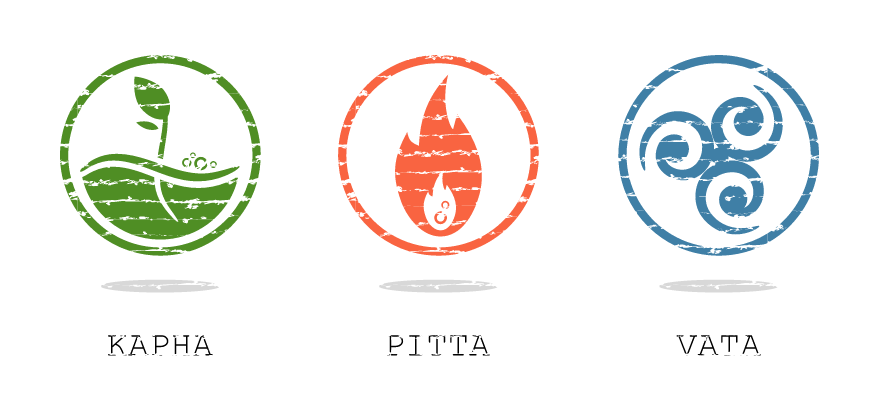
The Three Doshas of Ayurveda—Vata, Pitta, and Kapha—are energetic forces of nature that serve as practical guidelines for understanding both the inner world of the human being and its place in the outer world. No dosha is better than or superior to any other because Vata, Pitta, and Kapha are all vital to our physiology. Each performs a particular set of functional responsibilities in the body. However, when the doshas are out of harmony, our health can suffer greatly.
These three Doshas are related to the entire Ayurvedic treatment system. This article describes these natural forces and how they might impact on our health and way of life.
The Ayurveda Elements and the 3 Doshas
The three main functional energies in the body, or so-called “Doshas”, are Vata, Pitta, and Kapha. Vata is associated with wind. Kapha is associated with water. Pitta is associated with fire. All three Doshas are associated with the elements of nature. The five elements of nature are generally recognised as the following five components:
Earth (Prithvi)
Air (Vayu)
Water (Jala)
Fire (Teja)
Space (Aakash)
The three doshas—Vata, Pitta, and Kapha—have a strong connection to the natural elements. The connection is described below:
Air and space are associated to the Vata Dosha.
Fire and water are associated with the Pitta Dosha.
Earth and water are associated with the Kapha Dosha.
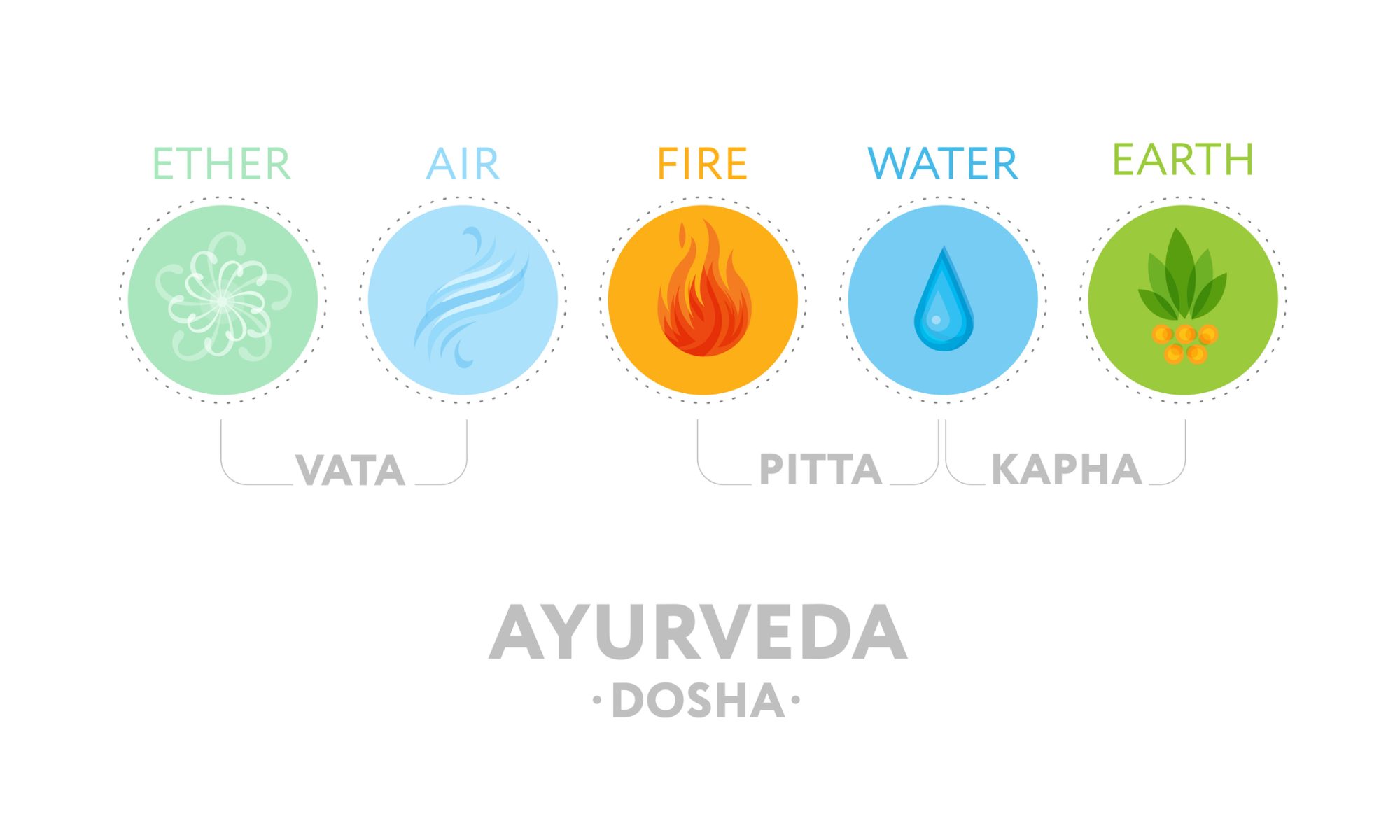
What is Vata Dosha?
The Ayurvedic element connected to air and space is known as Vata Dosha. This dosha has a mild, chilly, and dry character. It rules the movements in our body and mind. It displays actions like breathing, the neurological system, joint motions, blood flow, disposal of waste, and thought occurrence.
What is Pitta Dosha?
Based on the components of fire and water, the Pitta Dosha. This dosha has a hot, light, sharp, fluid, greasy, and dynamic nature. Pitta is frequently connected to summer and its hot and humid bright days. It has an impact on the metabolism, body temperature, skin, and appearance.
What is Kapha Dosha?
The Ayurvedic element Kapha Dosha is linked to earth and water. The characteristics of the Kapha Dosha involve slow, mois, chilly, heavy, smooth, and oily. In addition, Kapha represents structure, stability, and lubrication in the body and mind.
The Doshas’ Innate Nature
Understanding the differences between the Kapha, Vata, and Pitta doshas is essential.
Being made of air and space, Vata is light, clear, subtle, dry, chilly, and abrasive.
Pitta is a combination of fire and water, making it hot, light, sharp, lubricious, and liquid.
Earth and water combine to make the Kapha, which is steady, murky, heavy, sluggish, smooth, greasy, and soft.
Ayurvedic sorts of bodies can be defined based on the qualitative characteristics of the Doshas. This is a person’s constitution, which is determined by the dominant Dosha. Based on the main Doshas, each Ayurvedic body type has a unique physical constitution. The three primary Ayurvedic body types are Vata, Pitta, and Kapha.
https://youtu.be/WfN1ZLNzP4A?si=mrxNVlzDk6MEWTds
Body Type – Vata
People with a Vata body type have a predominantly Vata Dosha with more Vata-related qualities and traits. Vata body types in Ayurveda are often slim and vigorous. They anre easily recognised with their innovative minds and ability to think out of the box. The weather and the food they consume, both can frequently affect their mood.
The powerful traits of the Vata type body include the following:
- rapid learners
- creative minded
- able to multitask
- Kind by nature
- Slim and Flexible
The following traits are the opposite of the Vata constitution:
- emotional instability
- prone to feeling anxious
- Easily affected by the cold weather
- The appetite can change, and digestive issues could emerge.
- poor blood circulation
- Problems with sleeping
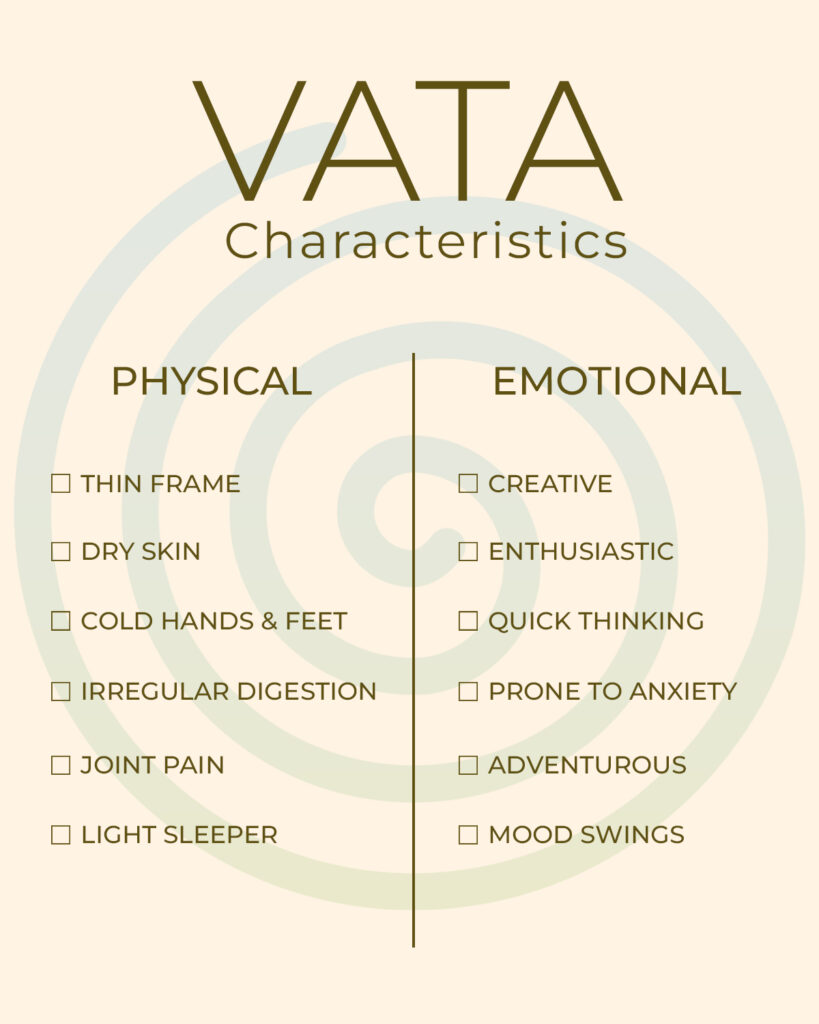
Pitta body type
The pitta type physique combines the characteristics of the Fire and Water elements. These are typically well-built, athletic people. They can come out as aggressive and goal-oriented by nature, further more they have strong leadership skills.
The Pitta-type constitution has the following strong qualities:
- Intelligence
- Quick learners
- goal-oriented and driven
- powerful leadership skills
- a healthy cardiovascular system and metabolism
- good and healthy skin and hair
- tenacious and determined
The Pitta-type body’s opposite characteristics include:
- Impatient
- may easily engage in confrontations
- Might experience mood changes and hunger pangs
- Especially sensitive to heat
- The most common health issue is inflammation
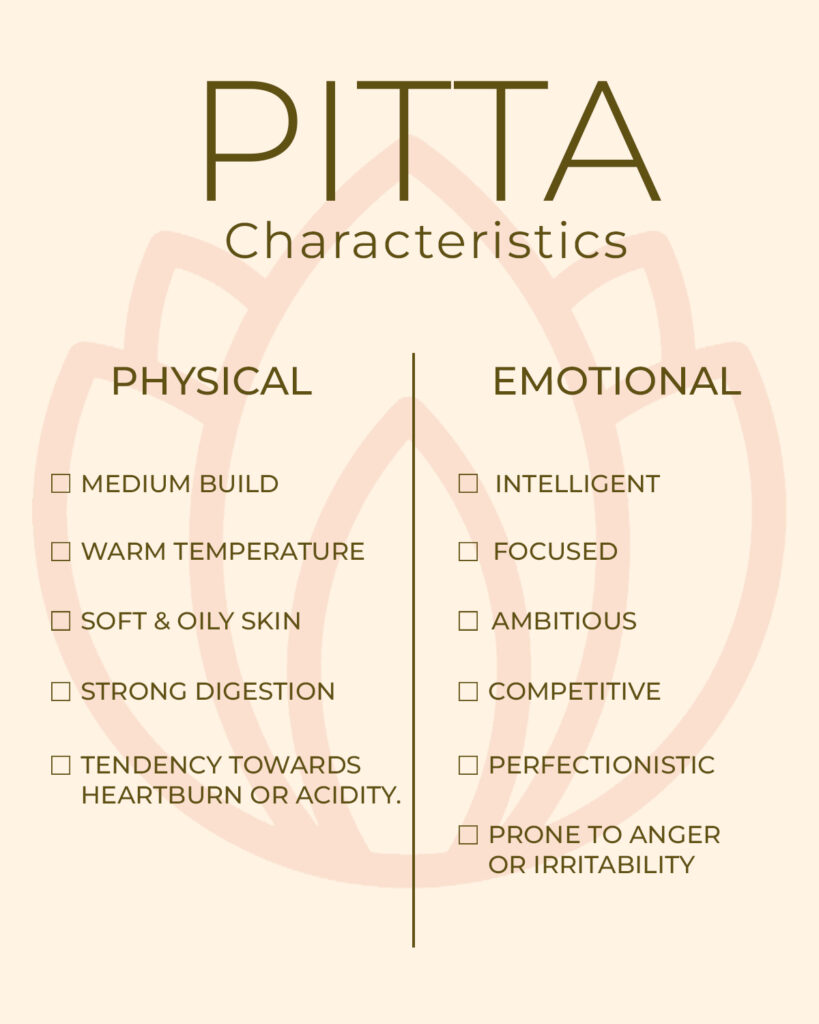
Body type-Kapha
With the water element present, the Kapha body type is earthy. Consequently, they become more grounded and stable. These are strong and resilient individuals, compassionate by nature. They not only complete tasks, but they also support and help others.
The following traits are typical for someone with a Kapha body type:
- empathetic and compassionate
- Do trust others
- Calm and patient
- Wise and mature
- Most people have good immunity.
- Happy and satisfied by the way of living they seek and build for them and the surrounding people around
The following traits oppose the Kapha Ayurvedic body type:
- They may have lethargic episodes due to a slow metabolism.
- They might end up gaining weight quickly.
- tend to sleep too much
- respiratory problems are easily developed
- Heart disease risk is higher
- lack of inspiration and motivation can cause a clinical depress
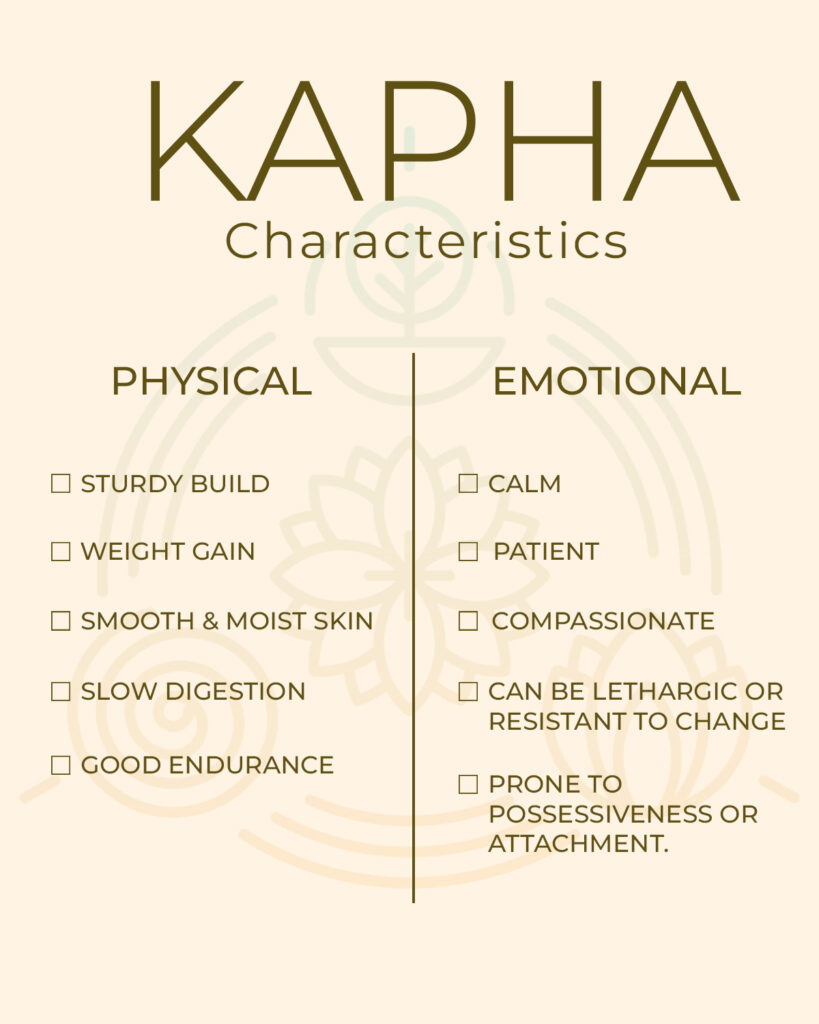
The variations of combinations and the Tridoshic body type
In addition to the three ayurveda body types mentioned above, the other types of dosha bodies are Vata-Pitta, Pitta-Vata, Pitta-Kapha, Kapha-Pitta, etc. When more than one Dosha is predominant, such combination can happen. Ayurveda also combines two different categories to describe the characteristics of each bodily type.
Ayurveda also combines two separate types of traits to describe the best one’s body type.
The Tridoshic body type, in which all three Doshas are entirely balanced, is one more Ayurvedic body type. This body type is often stable and in excellent health. The three Doshas’ forces balance one another, resulting in general good health.
The Functions of the Three Doshas
Based on the elemental forces they are composed of, each of the three doshas has a certain purpose. Movement is governed by Vata, digestion is governed by Pitta, and structure is governed by Kapha. Each of the doshas performs particular body tasks.
Functions of Vata Dosha
Every bodily motion, movement and flow is controlled by the Vata Dosha. Usually, it is presented below the navel, in the lower abdominal area.
Vata controls all of the body’s natural desires and biological needs, including hunger, thirst, urination, excretion, sleep, etc. It also contributes to the smooth operation of functions like respiration and preserves the health of the Dhatus, or tissues.
Vata controls the heart’s rhythm, how muscles contract, how blood flows, and how the brain and the rest of the body communicate with each other through the nervous system.
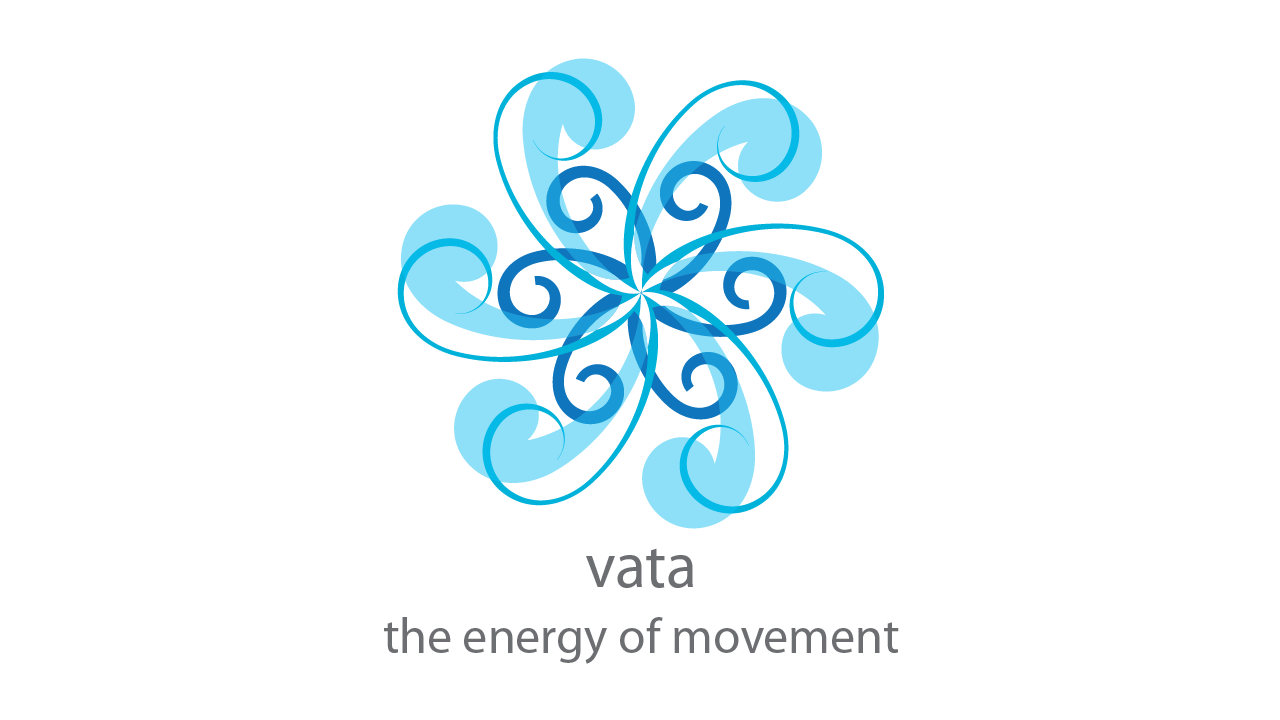
Functions of Pitta Dosha
The body’s metabolism and efficient digestion are under the control of the Pitta Dosha.
It is believed to be located in the upper abdominal region, above the navel.
Pitta corresponds with fire, maintaining a healthy body temperature. It develops intellectual sharpness and physical lustre . Since it is connected to metamorphosis and transformation, it controls how we feel and what we experience., or emotions and inner experiences.
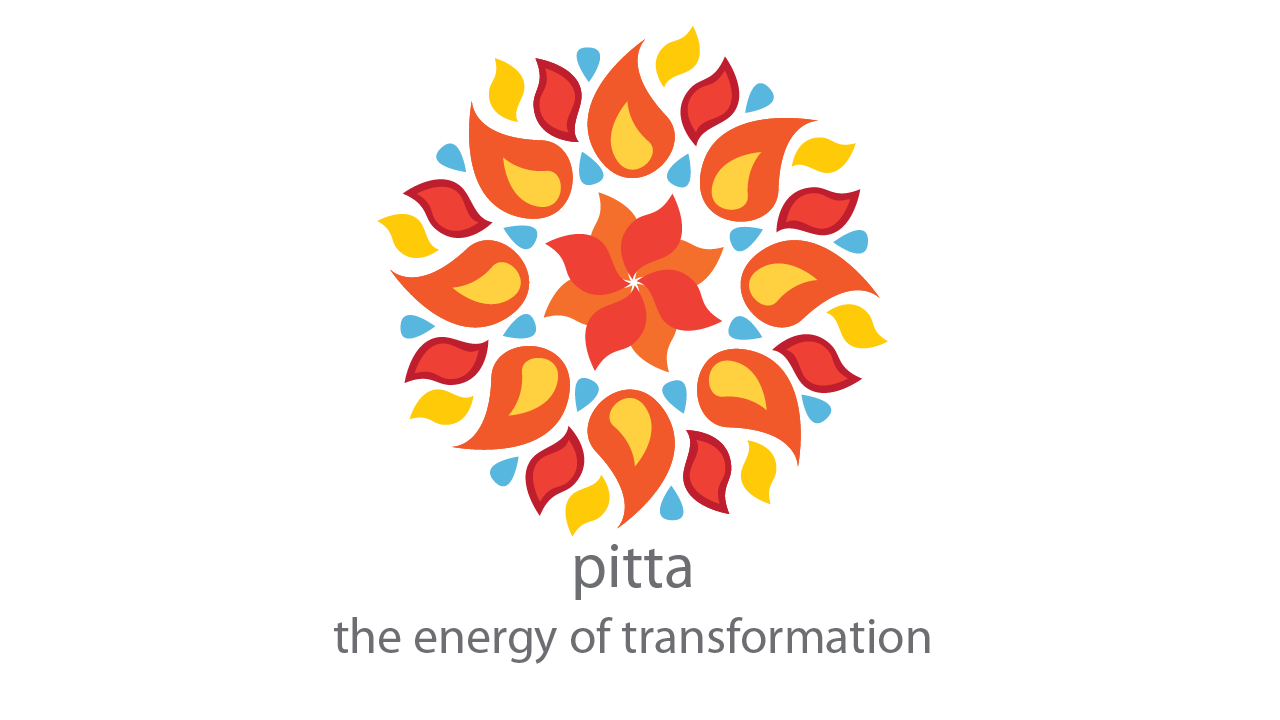
Functions of the Kapha Dosha
The body receives vigourness, vitality, and immunity from Kapha. It’s considered to be in the chest area.
It guarantees the skeletal system’s sturdiness and stability. It hydrates the tissues and cells since it contains the element-water. The skin is kept moisturised as a result. It provides lubrication for the joints, enabling them to operate smoothly .
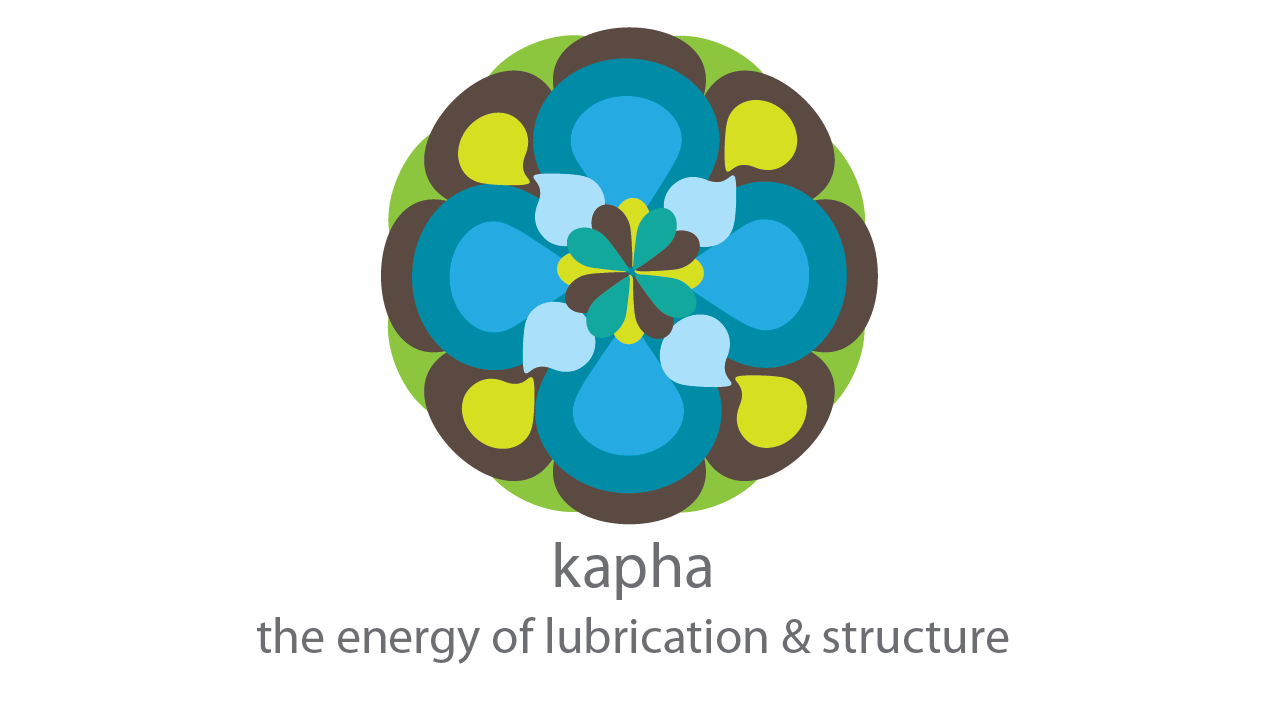
Unbalance or vitiation of the Doshas
Good health is ensured when the Doshas are in balance. However, it is frequently possible for the Doshas to become vitiated, which would result in an imbalance. Dosha imbalance can occur for a number of reasons, such as:
Improper diet is one in which the food that the being consumes is in opposition to the dominant Dosha.
inappropriate everyday habits caused by poor lifestyle management.
Stress and tension lead to trauma or anxiety.
Regardless of the cause, when one of the Doshas becomes vitiated, it might alter the balance. This may directly affect the health negatively. Any Dosha that has become vitiated will become overactive, which will result in certain symptoms or medical issues. Each person may experience the disturbance differently.
See what would happen if any of the Doshas became vitiated.
Consequences of unbalanced Pitta
Inflammatory responses occur when the Pitta Dosha becomes unbalanced. Every organ in the body is impacted by this.
On a mental level, the Pitta imbalance can result in a bad mood, leading to feelings of resentment, jealousy, irritation, wrath, and an urge to judge others. Vitiation can disrupt digestion and cause excessive appetite and thirst. Skin discoloration, as well as discoloration in the stool and urine, might happen. It may also result in insomnia.
Pitta can get aggravated by hot temperatures, the sun’s heat, and hot meals. Foods that are sour, salty, or pungent aggravate Pitta Dosha. Potatoes and spicy meals both vitiate this dosha.
Consequences of unbalanced Kapha
Congestion affects the body’s tissues and organs when the kapha dosha is unbalanced. Along with physical stagnation, it also results in mental stagnation and coldness.
Some consequences of this imbalance include white skin coloration and flabby bodies. Vata imbalance is frequently the cause of breathing issues. When the other two Doshas are vitiated, sleeplessness occurs, while lethargy and excessive sleep occur when the Kapha Dosha is vitiated. On a mental level, it results in excessive possessiveness, stubbornness, and resistance to change.
This Dosha can be made worse by cold, wet weather, as well as heavy, fatty foods like oils and nuts.
Effects of Vitiated Vata
The body may become metabolically or pathologically dry when the Vata Dosha is out of balance. One may experience weakness, have issues with their speech, and even become confused if the vata levels are below the ideal range.
Correcting any vitiation or imbalance in the Doshas is necessary. There are various approaches of doing this. Dosha vitiation can be treated with herbal Ayurvedic medication, lifestyle and nutritional adjustments, exercise, yoga and pranayama practises.
How do you balance Vata, Pitta, and Kapha?
According to Ayurveda, if the Dosha vitiation has resulted in an excessive amount of cold, the opposite quality of heat can help manage and diminish the vitiation. Let’s see how this idea functions.
Improve your Vata Dosha
Vata’s opposites include smooth, warm, moist, and oily.
It is advised to choose a warm, moist environment, both physically and emotionally, to treat Vata vitiation.
A human with unbalanced Vata, should comfort his emotions and surround himself with people who create harmonic atmosphere. This vitiation can also be cured by using sweet scents and listening to melodic and classical music.
Besides that, eat warm, soft foods like dairy, eggs, cooked veggies, berries, and so on. Increase the usage of sour, salty, and sweet flavours.
Improve your Pitta Dosha
Dry, soft, and cool are Pitta’s antipodes.
It’s best to find a cool environment to counteract the vitiation.
You can unwind in a calm setting while sleeping on a comfy bed. Seek for gentle emotional support. Have light, sweet, and cold meals. The diet can include salads, fruits, and vegetables. The food should also be bitter, astringent, or sweet. Eat naturally sweet foods and stay away from refined and processed foods.
Improve the Kapha Dosha
Warm, dry, light, and active are kapha’s opposites.
In order to restore balance, look for a warm, dry environment. Ask your loved ones for active emotional assistance. live a healthy, physically active lifestyle.
You must eat things that have a strong, astringent, or bitter flavour. Consume acidic and spicy foods like low-fat cheese, whole grains, eggs, and spices.
Exercise and physical activity help to boost immunity and increase blood circulation.
